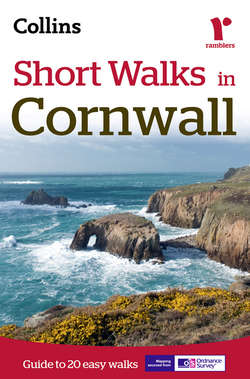Читать книгу Short Walks in Cornwall - Collins Maps - Страница 9
Geology
ОглавлениеThe dramatic and beautiful landscapes of Cornwall are largely a product of the geology beneath. The Lizard peninsula reveals the oldest rocks in the county, with a rare section of serpentine, formed deep in the Earth’s crust before being thrust up some 350 million years ago. However, as with the rest of the southwest peninsula, the greater part of the rock structure in Cornwall is of sedimentary origin, formed from beds of mudstone, sandstone and limestone laid down over 300 million years ago on the sea bed or on the beds of lakes. In some places river valleys cut deeply into these sedimentary rocks. In other places immense geological pressures have bent the strata into strange shapes, such as seen in the cliffs along the coast at Crackington Haven.
Rising out of this sedimentary plateau is the granite backbone of Cornwall. Granite is an igneous rock - one that has been thrust up in a molten state into the generally older sedimentary beds, cooling and hardening slowly, sometimes close to the surface. Forces such as the weather and sea have subsequently eroded it, leaving huge exposed bosses, or domes, of which Land’s End and Bodmin Moor are examples. The granite of Bodmin Moor was formed 287 million years ago and weathering along lines of weakness in the rock has created the distinctive ‘cheesewring’ formations often seen on the summits of tors such as Rough Tor. Neolithic Man also made his chamber tombs and entrance graves from the hard granite he found around him and this is one reason why there are more Neolithic remains in the Land’s End peninsula than in the whole of the rest of the south-west.
As well as creating the familiar bold and rugged scenery, the formation of granite rocks also made possible the Cornish mining industry. Cooling molten granite had the effect, through immense pressures and heat, of radically changing the sedimentary rock with which it came into contact, forming liquids and gases that eventually solidified as mineral ores. The coastal strip near Land’s End, as well as other areas such as St Agnes, are situated on these areas of contact - known as metamorphic aureoles - and this is where the ores of copper, tin and other metals such as silver and gold were found and exploited.
After the mining industry declined another Cornish industry developed that originated from the granite areas of the county. China clay, or kaolin was first discovered in Cornwall in 1746 and is still vitally important to the Cornish economy. Kaolin is granite that has decomposed over millions of years by the action of water originating deep in the earth’s crust. The clay is extracted from the quartz by powerful jets of water and the resultant fine-textured, pure white product is used for many purposes, from paper-making to face powder.
